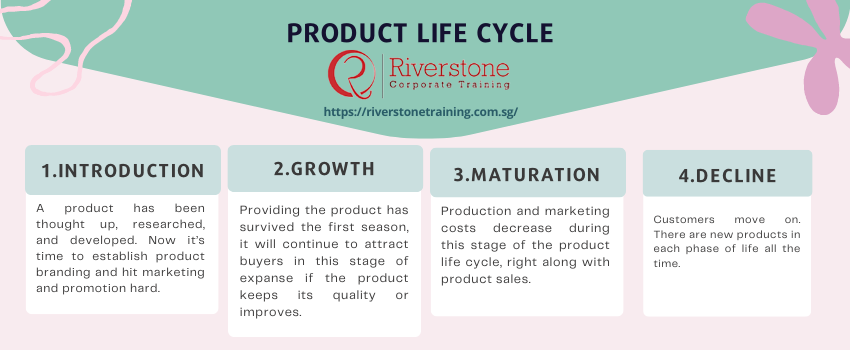
Product Life Cycle
Products go through seasons, just as people do. Just like we experience the winter, spring, summer, and fall, products go through their four seasons. Once a product has been thought up, researched, and developed, the four seasons are ready to start. Just like our changing seasonal needs, like a snow shovel and puffer coat in the winter, and a sunhat and air conditioning in the summer, products have differing seasonal requirements to be met for a successful season.
Learning the different stages of the product life cycle and using these stages as part of a business model can help raise the longevity of product life, or push the evolution of products to fit with the changing world around us. Traditionally, there are four life stages products go through; the birth to the retirement charted out.
Stages of Product Life Cycle
1.Introduction: It’s spring! New life everywhere, flowers sprouting, and warm sunshine. A product has been thought up, researched, and developed. Now it’s time to establish product branding and hit marketing and promotion hard. Hard. This is a costly time for a product. The perfect distribution model is chosen this season. During the introduction stage, the company will promote the product life cycle to targeted audiences, highlighting the reason they need this new product.
2.Growth: The dog days of summer. Beach waves under the scorching sun. Providing the product has survived the first season, it will continue to attract buyers in this stage of expanse if the product life cycle keeps its quality or improves. Proving it’s worth through reviews or testimonials, the word is out on your product; the news is spreading.
After listening to customer feedback, the company will make any necessary amendments to the product this season. Production levels will substantially increase, allowing for the opportunity to expand your audience. Other companies with notice the buzz around your product and may start producing products mimicking yours. They may strategically price below yours to pull more traffic and sales. This occurrence helps lift the product life cycle into the next phase.
3.Maturation: Leaves on the ground, yellow, orange, and red. As the product begins to mature, profit is at an all-time high. Production and marketing costs decrease during this stage of the product life cycle, right along with product sales. Competing companies have already made cheaper versions of this product, giving the public more than one option. It’s not all bleak, and there are ways to survive this phase.
Companies can create unique capabilities of this product to make it stand out from the rest during this stage. Cutting the price of the product and running frequent promotions can pull focus back on your product. What’s important is keeping customers, though; the product must continue to be the quality it has always been or better. If the quality declines to cut costs, customers will recognize it.
4.Decline: Icicles, snowmen, and cold toes. The inevitable. Customers move on. There are new products in each phase of life all the time. And it’s during this phase where a company chooses whether to keep the product on the shelves as a niche item, remove it from shelves altogether, or sell the rights to the product to another company.
By paying attention to the stages, a successful product goes through can be life-changing, game-changing. This four-stage model is a tool to better your product launch and success. By studying patterns in the marketplace and recognizing transition times, companies can more efficiently predict outcomes and position products correctly. They are essentially saving time and money.
Standing on the sidelines, as the public both picks at and praises your hard work, is testing. Staying calm and having this model to utilize and improve what you have to offer the world can certainly give peace of mind.


